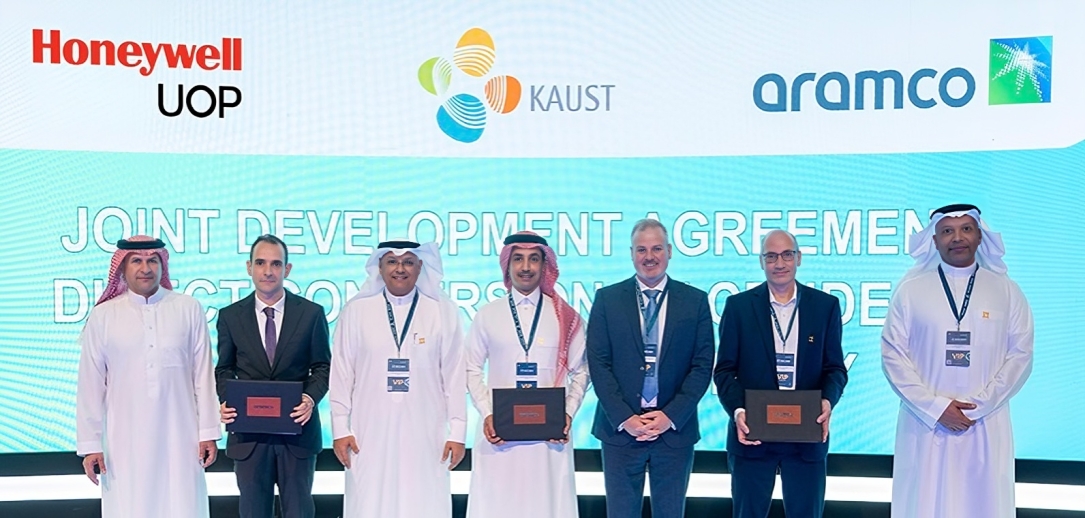KEY POINTS
- Aramco signed a crude-to-chemicals development deal with Honeywell and KAUST.
- The crude-to-chemicals process aims to cut costs and boost efficiency.
- Petrochemicals are seen as the main driver of future crude demand.
Saudi Aramco has signed a joint development agreement with U.S. industrial group Honeywell and King Abdullah University of Science and Technology (KAUST) to advance a direct crude-to-chemicals technology. The collaboration, unveiled Thursday by the Saudi research institution, is aimed at lowering both capital and operating costs tied to large-scale conversion.
Aramco bets on crude-to-chemicals
The agreement will focus on building and scaling the direct crude-to-chemicals process, known as CTC. Unlike conventional refining methods, the new approach is designed to convert crude oil directly into light olefins and other high-demand chemicals. KAUST said the technology has the potential to extract more value from each barrel while improving fuel efficiency, carbon utilization, and overall process economics.
For Aramco, the project fits within a broader strategy to strengthen Saudi Arabia’s petrochemicals capacity as transportation fuel demand plateaus in many major markets. By expanding the downstream footprint, the company aims to ensure sustained oil demand even as global energy consumption patterns evolve.
Crude-to-chemicals seen as strategic hedge
Ali A. Al-Meshari, Aramco’s senior vice president for technology oversight and coordination, said the company is focused on “harnessing the power of cutting-edge technologies” to capture more value and improve efficiency across operations.
The deal follows Aramco’s agreement earlier this year with China’s Sinopec to expand a petrochemicals complex in the kingdom. Aramco has also entered talks with China’s Rongsheng Petrochemical and Hengli Group to deepen cooperation in refining and chemicals both in Saudi Arabia and China.
Aramco’s downstream expansion comes as petrochemicals emerge as a main driver of crude demand, while fuel consumption growth slows. Over the past two years, the world’s largest oil exporter has steadily pursued partnerships in Asia, the biggest market for petrochemicals, according to OilPrice.



